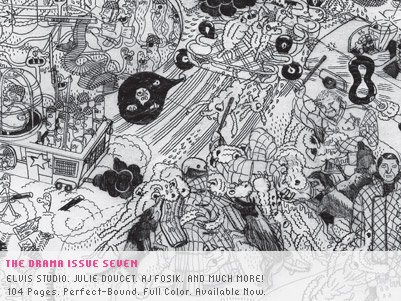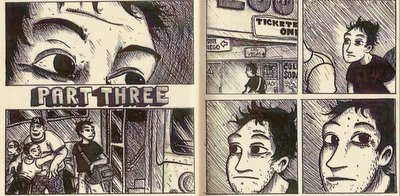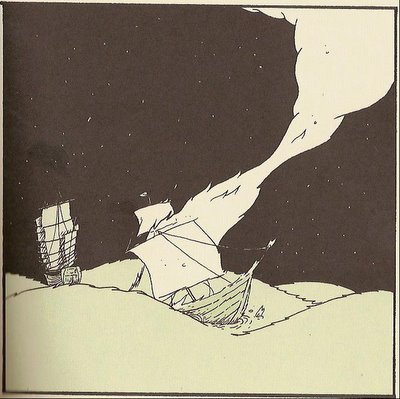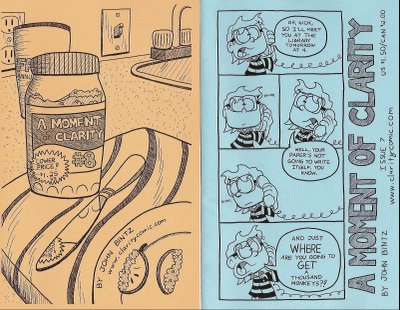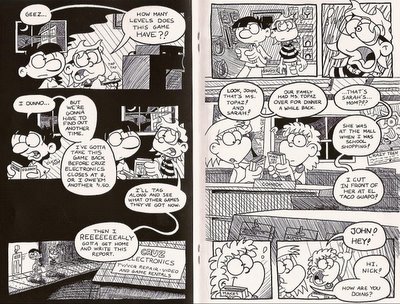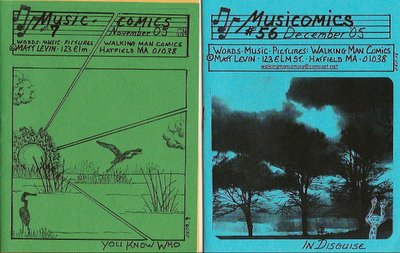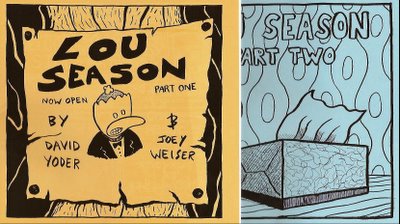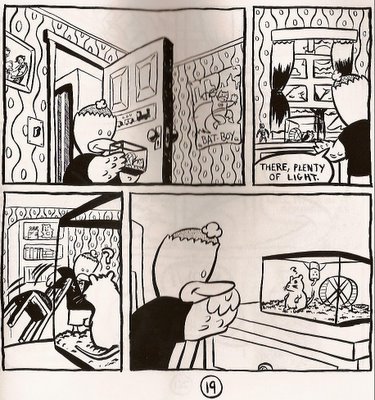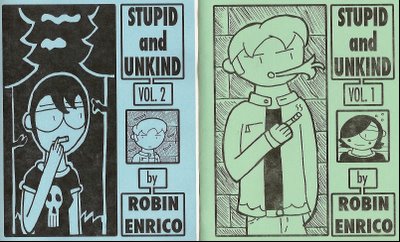2006 Isotope Award for Excellence in Mini-Comics
From mini-comic maniac, James Sime:
Submit Now: 2006 Isotope Award for Excellence in Mini-ComicsSAN FRANCISCO (January 16th, 2006) Acclaimed San Francisco comics retailer James Sime, proprietor of
Isotope - the comic book lounge, announced today that submissions for the
2006 Isotope Award for Excellence in Mini-Comics will be accepted until March 15th at midnight. "The beginning of the new year always rings in that moment of true greatness for our industry's mini-comic creators," Sime ranted to Shawn Hoke, mad genius behind the awesome Size Matters Blog, "It's time to fire up your printers and copy machines again, and to score yourself some of the gold and the glory that is the fourth annual Isotope Award for Excellence in Mini-Comics!"
This coveted award, known internationally for launching the professional comic careers of Rob Osborne (1000 STEPS TO WORLD DOMINATION), Josh Cotter (SKYSCRAPERS OF THE MIDWEST), and Daniel Merlin Goodbrey (THE LAST SANE COWBOY), is a beautifully hand-crafted statue sculpted by designer Crowe made entirely from carved ebony fossil stone and satin silver. "It's the pointiest award I'm aware of,"
AdHouse Books publisher, Chris Pitzer commented, "It could sure do some damage. It also throws the lucky mini-comics creator into the spotlight of the Alternative Press Expo. THAT could mean added sales of your comic, more invites to parties, and a possible deal with a boutique juggernaut of publishing, like AdHouse Book. In the end, it's your chance to reach for the stars, with your feet on the ground."
The award selection committee for 2006 remains a mix of comic aficionados, entrepreneurs, artists, and industry impresarios. Including self-publishers, mini-comic creators and, of course, a person who sells comics for a living, "Everybody in the industry already knows how this works, we like to keep the committee fresh by bringing in new blood each year, but still ensure that the Isotope Awards Committee covers the entire spectrum of the mini-comic equation," Sime declared, "Like last year I'll be on the judging committee once again, as will be
PopImage columnist Jason McNamara who has a voracious appetite for minis and always keeps his finger on the pulse of what's happening. Representing for the classic literature set we've got our comic lovin' Librarian in the form of Isotope Special Projects Director Kirsten Baldock who heads up our judging committee. And for our new additions this year we're bringing on board some individuals I'm very proud to have on our judging committee: the mini-comic creator who blew our minds last year and took home the 2005 Isotope Award for his awesome mini,
Daniel Merlin Goodbrey, and comic publisher, Chris Pitzer, who has, perhaps, the most impeccable taste in all of comics.
As always, the only fee for entry to this competition is five copies of your mini-comic sent to Isotope's Special Projects Director Kirsten Baldock at the Isotope address (326 Fell St. San Francisco, CA 94102) before the March 15th deadline. As is tradition, the award will be given out at a grand ceremony during APE AFTERMATH at the Isotope in conjunction with San Francisco's
ALTERNATIVE PRESS EXPO. San Francisco’s APE convention has been a forum for small and independent publishers in the industry for many years. Because of the nature of this award, the winner will be contacted in advance and must be present at the Isotope at 9 PM on Saturday, April 8th for the award presentation ceremony.
"These award ceremonies are a blast, and without question this year's will be the best one yet!" enthused Sime, "And this year, I've got a sexy new location that's going to rock people's worlds! And it's right in the heart of San Francisco, only a stone's throw from the Concourse Convention Center and any hotel you could possibly want to say at. Trust me, this year is going to Eleven!"
"I've said it before and I'll say it again. Mini-comics are the basement tapes of the comic industry," Sime said, "And just like basement tapes, this is where the raw creative spark is at it's brightest. We're talking the bleeding edge of comics innovation and this is where the industry's superstars of tomorrow are perfecting their riffs and chops today. We want to shine the spotlight on the work these future superstars are making... that's what the Isotope Award is all about! I know you people out there have some great minis, so send them in and together let's show the world how hard mini-comics can rock!"
The Isotope Award for Excellence in Mini-Comics could be yours, submissions of five copies accepted until March 15th at 326 Fell St. San Francisco, CA 94102. For more information contact the Isotope at (415) 621 - 6543 or at isotopepromotions@gmail.com
Well, what the hell are you waiting for? You heard the man.
